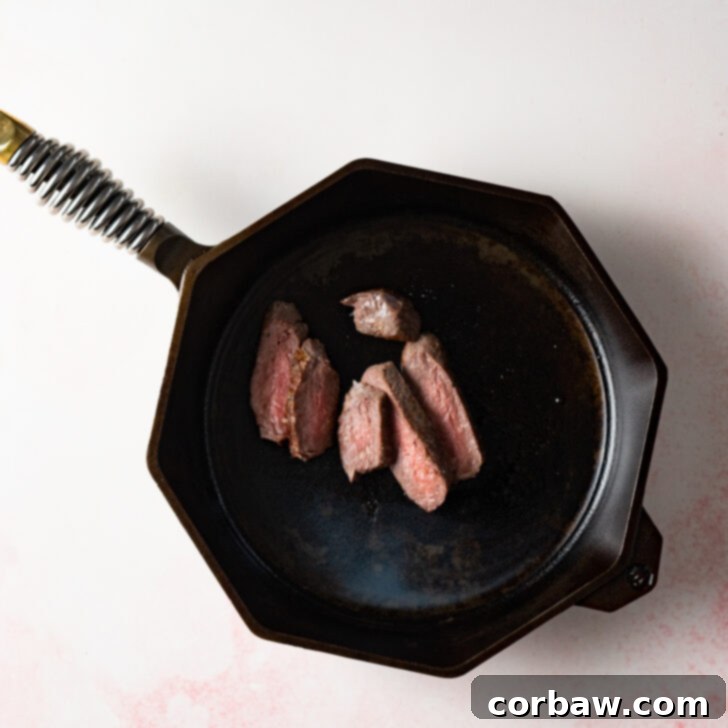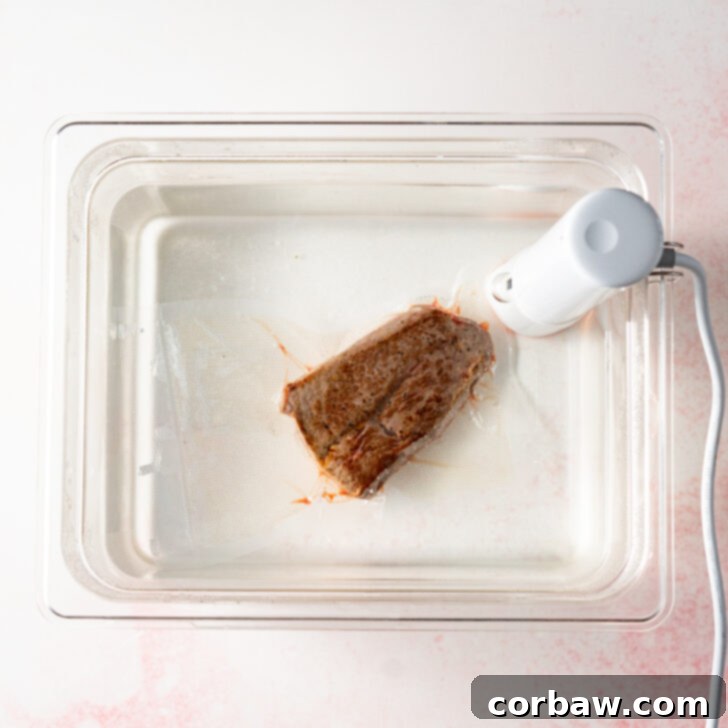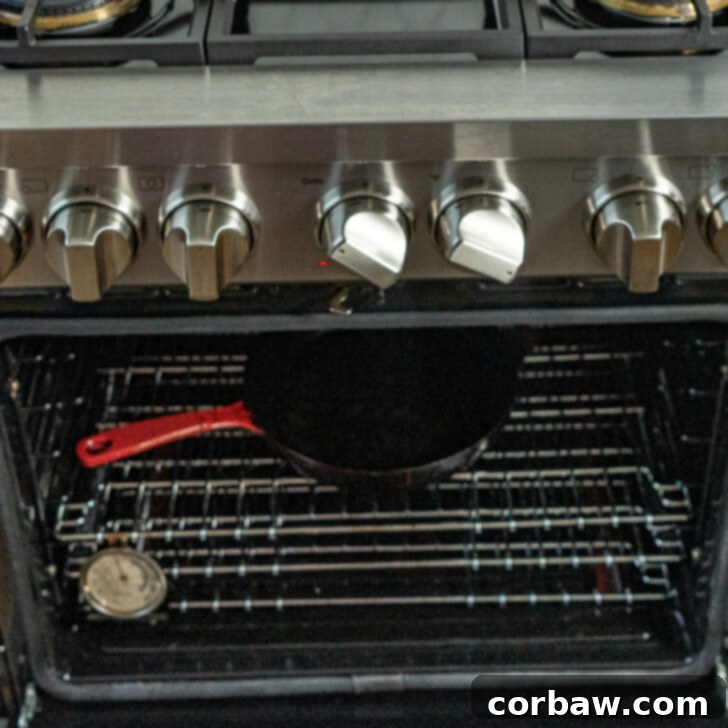The Ultimate Guide to Reheating Steak: Keep It Juicy, Tender, and Delicious
There are few culinary delights that rival a perfectly cooked steak. The succulent texture, the rich flavor, and that satisfying sear – it’s an experience we all cherish. And more often than not, a great steak leaves no leftovers. However, for those fortunate occasions when you do find yourself with a beautiful piece of steak remaining, the challenge then becomes how to bring it back to life without compromising its original perfection. The goal is to reheat it to a desirable temperature without overcooking, drying it out, or turning it into a rubbery disappointment. This comprehensive guide will walk you through the best methods to reheat your steak, ensuring it tastes almost as good as it did fresh off the grill or out of the pan.
Why Reheating Steak is a Delicate Art
Reheating steak isn’t as simple as tossing it into any appliance. Steak, especially if cooked to a medium-rare or medium doneness, is particularly susceptible to drying out and becoming tough when exposed to high heat for too long. The muscle fibers contract, pushing out moisture, and the fat renders further, leading to a less palatable experience. The key is to use methods that gently bring the steak back to temperature, allowing its internal warmth to redistribute evenly without further cooking the exterior or stripping away its precious juices.
The Microwave: A Reheating Method to Avoid
Let’s address the elephant in the room right away: the microwave. While convenient for many leftovers, the microwave is generally the enemy of a good steak. Its method of heating works by exciting water molecules, leading to rapid and often uneven cooking. This means your steak is highly likely to become dry, tough, and rubbery, with hot spots and cold spots, ruining both texture and flavor. Unless your intention is to transform your premium cut into something akin to shoe leather, it’s best to steer clear of the microwave for reheating steak.



The Best Methods for Reheating Leftover Steak
So, if the microwave is out, what are your best options for bringing that delicious leftover steak back to its former glory? The following methods prioritize gentle, even heating and moisture retention, ensuring a delightful eating experience.
- 1. Sous Vide (The Gold Standard for Whole Steaks)
For those who own a sous vide immersion circulator, this is hands down the absolute best method for reheating whole steaks, and arguably for cooking steak in the first place! The sous vide technique involves cooking food in a precisely temperature-controlled water bath. This method guarantees that your steak will be reheated to your desired internal temperature without any risk of overcooking, maintaining its incredible juiciness and tender texture.
How to Reheat Steak Using Sous Vide:
- Prepare the Steak: If your steak was already vacuum-sealed for storage, you can use that bag. Otherwise, place your leftover steak into a vacuum-sealable bag. Remove as much air as possible using a vacuum sealer or another air removal method (like the water displacement method for zip-top bags).
- Set Up the Water Bath: Fill a large pot or container with water and set your sous vide immersion circulator to your desired internal temperature. For a perfect medium-rare, aim for 130°F (54.4°C) to 135°F (57.2°C). If your steak was originally cooked to a higher doneness, you can match that temperature to avoid further cooking.
- Submerge and Reheat: Once the water bath reaches the target temperature, carefully submerge the sealed steak.
- Reheating Time: Reheat the steak for approximately 30 minutes to 1 hour, depending on its thickness. Since the steak is already cooked, you are simply bringing it back to temperature; extended time in the water bath will not overcook it.
- Optional Sear: For an extra boost of flavor and texture, remove the steak from the bag, pat it completely dry with paper towels, and quickly sear each side in a very hot cast iron skillet for 30-60 seconds to achieve a fresh crust.
This method truly provides an unparalleled reheating experience, making your leftover steak feel like a fresh culinary creation.
- 2. Pan Sear in a Cast Iron Skillet (Excellent for Sliced Steak)
If you’ve sliced your steak before storing it, or prefer a quick method with a good crust, pan searing in a cast iron skillet is an excellent choice. Cast iron retains heat exceptionally well, which is crucial for getting a quick sear without cooking the interior too much.
How to Reheat Sliced Steak in a Cast Iron Skillet:
- Bring to Room Temperature: For best results, let your sliced steak sit on the counter for 20-30 minutes to take the chill off. This helps ensure more even reheating.
- Prepare the Skillet: Place your cast iron skillet over medium-high heat and let it get quite hot. You want it smoking slightly before adding the steak.
- Add Fat: Add a tablespoon of high smoke point oil (like avocado or grapeseed) or a pat of butter to the hot skillet.
- Sear the Steak: Add the steak slices to the hot skillet in a single layer, ensuring not to overcrowd the pan. Keep them moving with tongs.
- Reheat Until Just Warmed: Sear for approximately 1-2 minutes, flipping frequently, until the steak slices are just warmed through and have developed a slight crispy edge. The goal is to warm, not to cook further.
- Serve Immediately: Remove from the skillet and serve right away to enjoy the tender interior and crisp exterior.
- 3. Oven in a Cast Iron Skillet (Great for Whole Steaks without Sous Vide)
For those without a sous vide setup but who want to reheat a whole steak gently, the oven combined with a cast iron skillet is a fantastic alternative. This method uses low, indirect heat to warm the steak through without overcooking, and then finishes with a quick sear for texture.
How to Reheat Whole Steak in the Oven with a Cast Iron Skillet:
- Preheat Oven and Skillet: Place your empty cast iron skillet in the oven and preheat to a low temperature, around 250°F (120°C). Preheating the skillet along with the oven helps it retain heat and cook more evenly, expediting the process once the steak is added.
- Bring Steak to Room Temperature: While the oven preheats, let your steak rest on the counter for 20-30 minutes. This is crucial for preventing the exterior from overcooking before the center warms up.
- Slow Warming in the Oven: Once the oven and skillet are preheated, carefully place the steak into the hot skillet. Cook for approximately 10-15 minutes, then flip the steak and cook for another 10-15 minutes. The exact time will depend on the thickness of your steak and its initial temperature. Use a meat thermometer to check for an internal temperature of 100-110°F (37.8-43.3°C) for a medium-rare target before moving to the next step.
- Finishing Sear (Optional but Recommended): For that perfect crust, remove the steak and skillet from the oven. Carefully transfer the steak to a plate. Increase the oven temperature to its highest setting (e.g., 450-500°F / 232-260°C) and place the skillet back in for a few minutes to get it searing hot. Alternatively, you can transfer the hot skillet to a stovetop burner over high heat. Add a pat of butter or a high smoke point oil to the screaming hot skillet. Sear the steak for 60-90 seconds per side, until a beautiful crust forms.
- Rest and Serve: Allow the steak to rest for 5-10 minutes before slicing and serving. This resting period allows the juices to redistribute, ensuring a tender and moist result.
Essential Tips for Reheating Steak Successfully
Beyond the specific methods, a few general principles will elevate your steak reheating game:
- Temperature is Key: While sous vide offers perfect temperature control, with other methods, an instant-read meat thermometer is your best friend. For a medium-rare steak, the internal temperature should ideally reach 130-135°F (54.4-57.2°C). Remember, reheating is about warming through, not cooking further.
- Room Temperature Start: Always allow your steak to sit on the counter for 20-30 minutes before reheating (for pan-sear and oven methods). This brings down the temperature differential, allowing the steak to heat more evenly and reducing the risk of overcooking the exterior while the interior is still cold.
- Add Moisture and Fat: A little extra fat can go a long way in preventing dryness. When pan searing, add a knob of butter or a drizzle of oil. For oven reheating, you can brush the steak with a little beef broth or a compound butter.
- Reheat Sauces Separately: If you have a leftover sauce (like a pan sauce, béarnaise, or chimichurri), I highly recommend reheating it separately. Sauces often have different reheating requirements and can break or burn if reheated directly with the steak. They are usually best warmed gently in a small saucepan on the stove or even quickly in the microwave.
- Don’t Overcrowd the Pan/Skillet: When using the pan-sear method for sliced steak, cook in batches if necessary. Overcrowding cools down the pan, leading to steaming instead of searing, which results in a dull, less appealing crust.
- Rest the Reheated Steak: Just like with a freshly cooked steak, allowing your reheated steak to rest for 5-10 minutes after warming helps the juices redistribute, ensuring maximum tenderness and flavor.
- Consider the Steak Cut: Thicker, fattier cuts like ribeye or porterhouse tend to reheat better than leaner, thinner cuts like flank or skirt steak, as they have more insulation and moisture. Adjust reheating times accordingly.
Creative Uses for Leftover Steak
Sometimes, the best way to enjoy leftover steak isn’t to try and replicate the original meal, but to embrace its new form! Leftover steak can be incredibly versatile and a fantastic ingredient for a variety of dishes. Getting creative ensures that every last bite is savored and enjoyed.
- Steak Sandwiches or Wraps: Thinly slice the reheated steak and layer it in a crusty baguette with caramelized onions, horseradish sauce, and arugula, or wrap it in a tortilla with your favorite fixings for a quick lunch.
- Stir-Fries: Cut the steak into thin strips and add it at the very end of a vegetable stir-fry, just long enough to warm through. Its rich flavor will complement Asian-inspired sauces beautifully.
- Steak Salads: Slice the cold or lightly reheated steak over a fresh green salad with a vibrant vinaigrette. Add some crumbled blue cheese or goat cheese for extra flavor.
- Steak Tacos or Burrito Bowls: Dice the steak and use it as a flavorful protein for tacos with salsa, avocado, and sour cream, or build a delicious burrito bowl with rice, beans, and fresh toppings.
- Steak and Egg Breakfast: Chop up the steak and add it to a breakfast scramble, omelet, or a hearty steak and potato hash for a luxurious start to your day.
- Pasta Dishes: Toss thinly sliced steak with pasta, a rich cream sauce, mushrooms, and spinach for a satisfying and quick weeknight dinner.
- Philly Cheesesteak Inspired: Slice very thinly and quickly warm with sautéed onions and peppers, then pile onto a roll with melted provolone cheese.
By following these methods and tips, you can transform your leftover steak from a potential culinary afterthought into a second delightful meal. No more dry, tough steak – only tender, flavorful enjoyment, every time!
You can also view this as a web story here.
